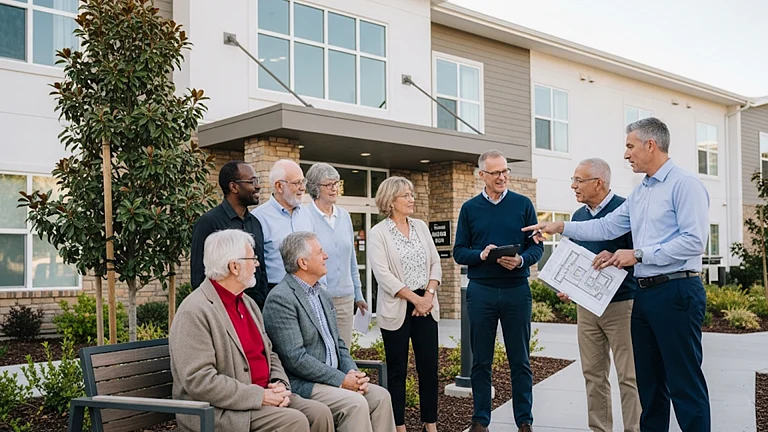
Summary of this article
Senior living to attract Rs 72,000 crore.
Demand rises as elderly population doubles by 2050.
Non-metros emerging as key growth destinations.
India's senior living segment is in a growth phase as the country's elderly population is increasing rapidly. According to a recently released report by Savills India, Living the Years That Count: Enhancing India's Senior Living Through International Best Practices, the sector could receive investments of anywhere between $4.8 billion (Rs 41,000 crore) and $8.4 billion (Rs 72,000 crore) in 2025-2030.
Increasing Senior Population
India had over 155 million individuals of 60 years and older in 2024. The number is predicted to double by 2050, when the elderly will constitute over 20 per cent of the population. The report adds that the shift from family-based care to organised senior housing is being fuelled by increased life expectancy, urbanisation, and falling fertility.
Internationally, the senior living sector is an entrenched one, with nations like Japan, the US, and Australia having institutionalised retirement communities. India is in its budding stages of the formal market, but demand is growing.
Housing Models And Pricing
Indian senior living projects are usually categorised as independent living, assisted living, nursing care, and continuing care retirement communities. Independent living homes comprise 85-88 per cent of the market now, with assisted living taking up 10-16 per cent and growing slowly.
Pricing varies between metros and non-metros. In metros like Bengaluru, Delhi-NCR, and Pune, outright purchase of a senior living apartment generally ranges between Rs 45 lakh and Rs 75 lakh, with high-end projects crossing Rs 2 crore. In non-metros like Coimbatore, Vadodara, and Mysore, prices range from Rs 25 lakh to Rs 80 lakh.
For rental options, monthly fees typically are between Rs 25,000 and Rs 1 lakh, based on the intensity of services and amenities. Supported living care and medical care are charged separately.
Non-Metro Cities Expansion
Though metros continue to be the prime locations for retirement housing, the report points out that nearly 34 per cent of ongoing projects are now in non-metro towns like Vadodara, Coimbatore, and Goa. These towns provide lower entry points and more peaceful environments, which are attracting the attention of developers as well as seniors.
The overall growth is not restricted to residential development. A number of projects entail amenities like yoga and meditation centres, libraries, community centres, and healthcare assistance. Some incorporate vocational and skill-sharing through joint ventures with NGOs.
Investment Activity
The report refers to increasing investment in the industry. Max India has made an investment of Rs 219 crore, Rainmatter Capital and Gruhas Rs 168 crore, and Morgan Stanley's North Haven India Infrastructure Fund Rs 92 crore. Some other notable deals include Rs 77 crore from Manipal Group's family office fund and Rs 45 crore from General Catalyst and Gruhas.
Columbia Pacific Communities has also made an announcement of Rs 200 crore in development projects in southern and western India.
The size of the organised senior living market is approximately $1–2 billion, the report states. As awareness and demand continue to grow, this value is set to appreciate very significantly by 2030.
Land Requirements And Future Potential
The report provides three growth scenarios for the sector. Under the conservative scenario, $4.8 billion investment will need around 627 acres of land by the year 2030. Under the moderate scenario, $6.5 billion investment will need around 814 acres. Under the optimistic scenario, $8.4 billion investment will need around 1,000 acres.
The research says that senior living acceptance is stronger in Tier I cities, which are urban, but Tier II cities offer huge untapped potential. The report also stated that the next five years are pivotal for creating bigger and more diversified senior living projects all over India.
Policy Framework
The report states that India's senior living segment is supported by such policies as the Model Guidelines for Development and Regulation of Retirement Homes (2019) and the state-specific laws in Maharashtra and Haryana. Yet, the issue of affordability and greater accessibility persists, with many projects being addressed to high-income retirees.













